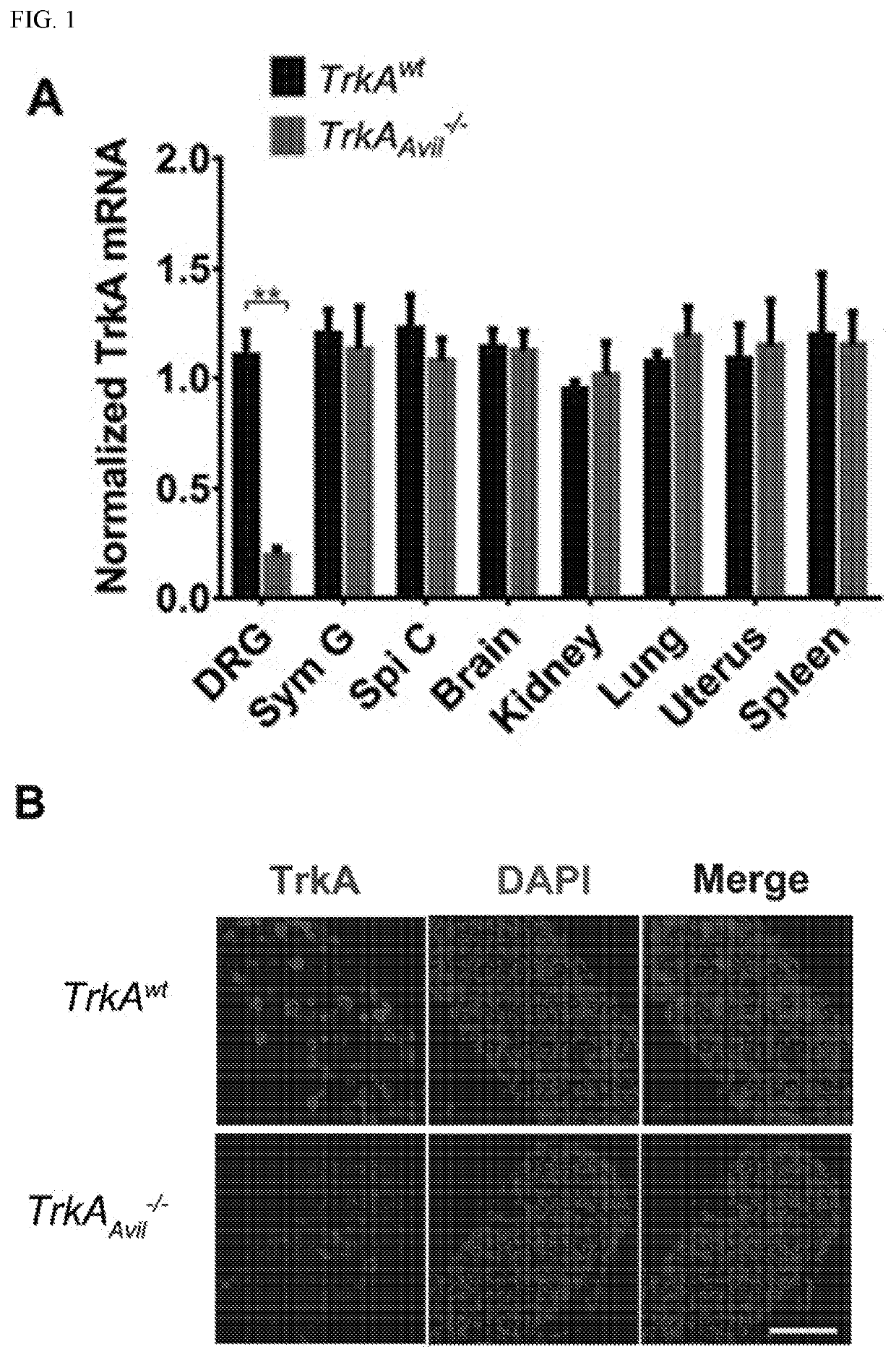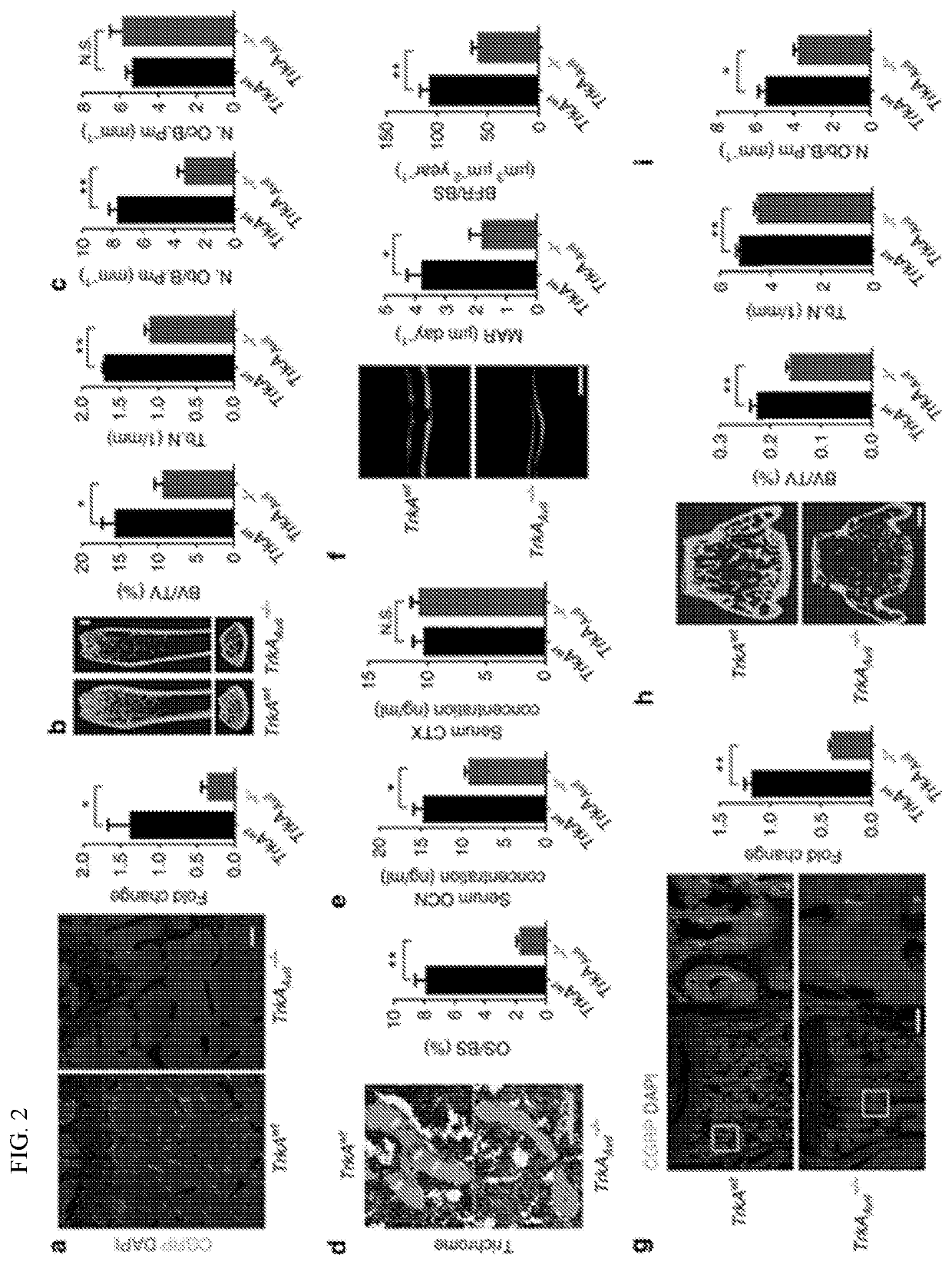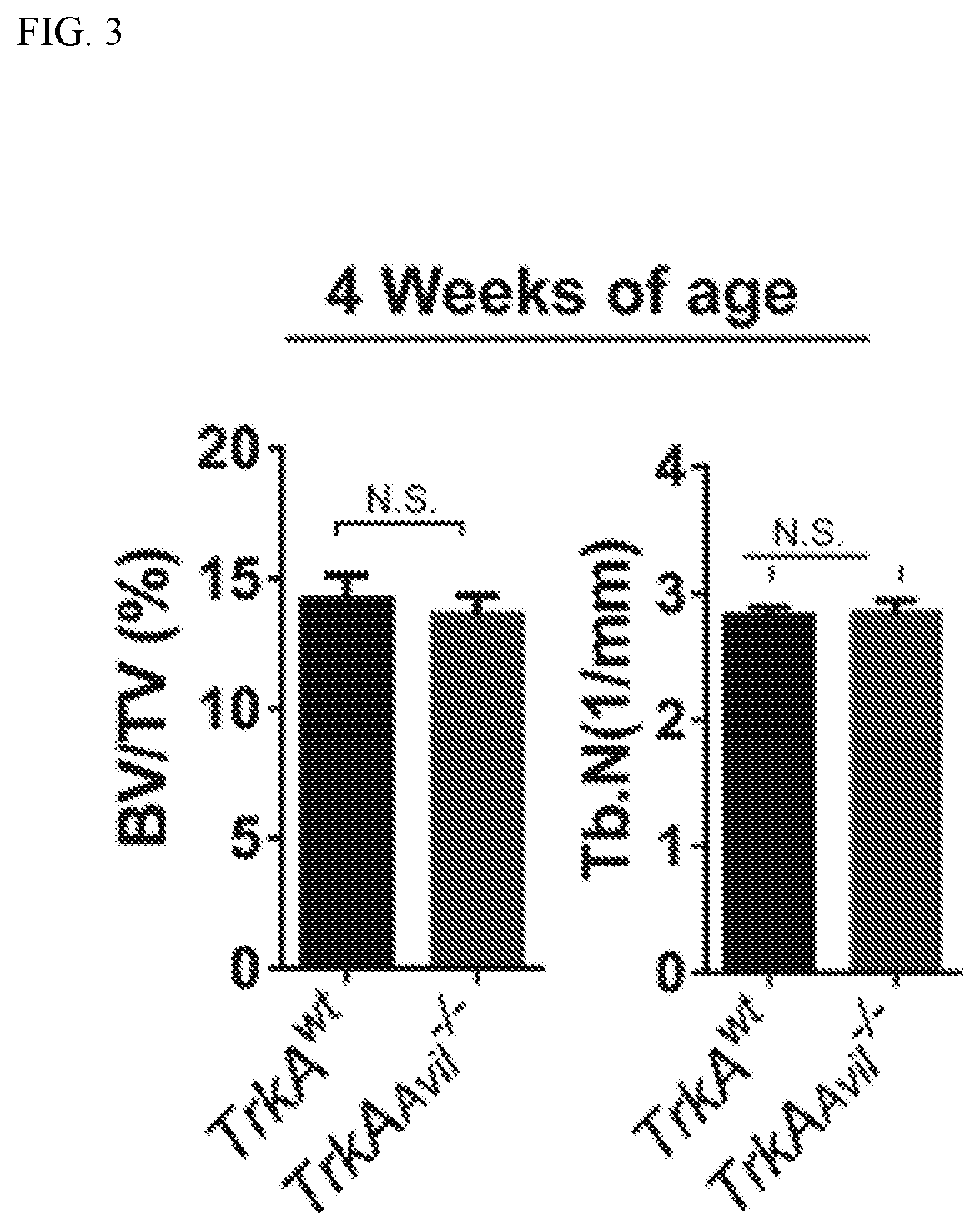Compositions and methods for treating metabolic disorders
a metabolic disorder and composition technology, applied in the field of compositions and methods for treating metabolic disorders, can solve the problems of inability to achieve satisfactory prevention or cure, oa is a costly and prevalent joint disease, etc., and achieve the effects of restoring the structure of subchondral bone, regulating bone formation, and modifying joint destruction
- Summary
- Abstract
- Description
- Claims
- Application Information
AI Technical Summary
Benefits of technology
Problems solved by technology
Method used
Image
Examples
examples
[0104]The following examples are illustrative, but not limiting, of the compounds, compositions, and methods of the present invention. Other suitable modifications and adaptations of the variety of conditions and parameters normally encountered in clinical therapy and which are obvious to those skilled in the art are within the spirit and scope of the invention.
example i
[0105]This example demonstrates that sensory denervation reduces osteoblastic bone formation.
[0106]To investigate the effect of sensory nerve in bone, experiments were conducted that created a sensory denervation mouse model (TrkAAvil− / −) by crossing sensory nerve-specific cre (Advillin-cre) mice with nerve growth factor (NGF) receptor TrkA floxed (TrkAwt) mice. Quantitative polymerase chain reaction (qPCR) and immunofluorescent staining of TrkA in the dorsal root ganglion (DRG) neurons and the other tissues isolated from the TrkAAvil− / − mice validated the knockout efficiency and specificity of the TrkA gene in the TrkAAvil− / − mice (FIG. 1). Furthermore, immunostaining of femur sections showed that most calcitonin gene-related peptide (CGRP)+ sensory nerve fibers were eliminated in the TrkAAvil− / − mice (FIG. 2A). Significant bone loss was observed in 12-week-old TrkAAvil− / − mice relative to their wild-type (WT) littermates in pCT analysis (FIG. 2B), while no significant bone volume ...
example ii
[0108]This example demonstrates that knockout of PGE2 receptor EP4 in sensory nerve induces bone loss.
[0109]Because PGE2 is known to stimulate osteoblastic bone formation, experiments were conducted that measured PGE2 levels in the serum of both global and inducible sensory denervation mice. Interestingly, PGE2 levels increased significantly in all the denervation mouse models (FIG. 7A). The results prompted us to examine whether PGE2 mediates sensory nerve in regulation of osteoblast bone formation. It was found that bone density was negatively correlated with PGE2 levels, and that PGE2 levels increased in aged or the other osteoporotic mice (FIG. 7A). Immunohistochemical analysis also showed that expression of COX2 in femur osteoblasts, the PGE2 production-limiting enzyme, increased in the sensory denervation OVX and aged mice (FIG. 7B, C). As EP4 is the primary receptor of PGE2 for bone formation (see, Yoshida, K. et al. Proc. Natl. Acad. Sci. U. S. A. 99, 4580-4585), experiments...
PUM
| Property | Measurement | Unit |
|---|---|---|
| temperature | aaaaa | aaaaa |
| current | aaaaa | aaaaa |
| voltage | aaaaa | aaaaa |
Abstract
Description
Claims
Application Information
 Login to View More
Login to View More - R&D
- Intellectual Property
- Life Sciences
- Materials
- Tech Scout
- Unparalleled Data Quality
- Higher Quality Content
- 60% Fewer Hallucinations
Browse by: Latest US Patents, China's latest patents, Technical Efficacy Thesaurus, Application Domain, Technology Topic, Popular Technical Reports.
© 2025 PatSnap. All rights reserved.Legal|Privacy policy|Modern Slavery Act Transparency Statement|Sitemap|About US| Contact US: help@patsnap.com



